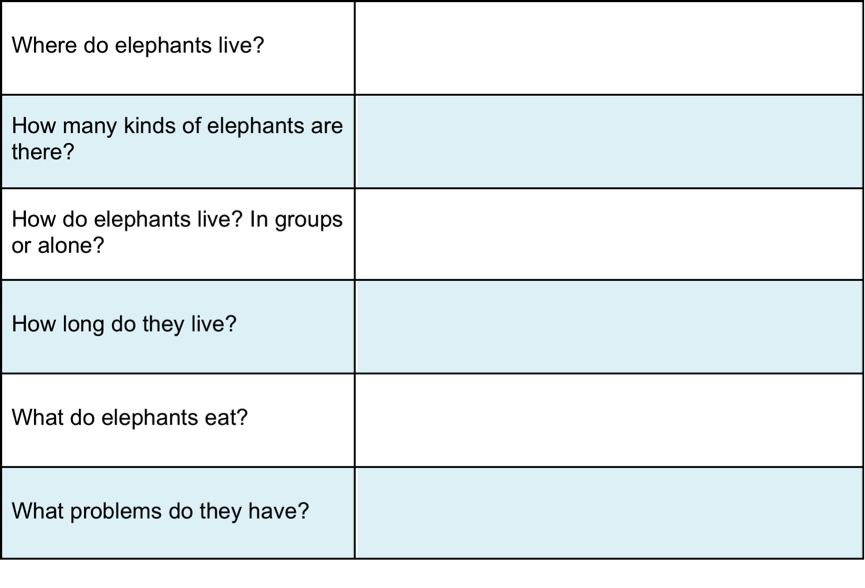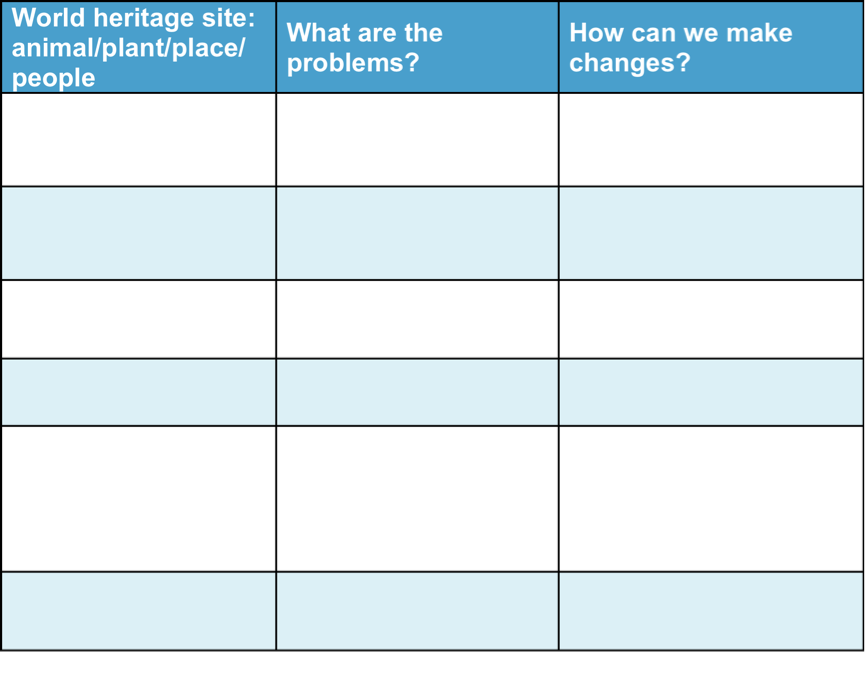Information for Teachers
Curriculum links
Australian Science Standards
DT (ACTDEK010) Sustainability factors that impact on design of products, services and environments
UIS (ACSHE051) Science knowledge helps people to understand the effect of their actions
New Zealand Science Achievement Objectives
NS: Science is a way of explaining the world and that science knowledge changes over time
NS: Scientists work together and provide evidence to support their ideas
Helpful websites
You may want to direct your students to websites to help with their investigations.
Students can search for the particular animal or plant that interested them, e.g. flamingos, rhinoceroses, wolves.
They can search to find out more about a world heritage place from the book, e.g. Machu+Picchu or Incas+at+Machu+Picchu
How to search the internet
1 Keep your request short
Fewer words will give a more accurate search.
2 Choose exactly what you want
For example: Arctic Circle Climate
3 Use quotes
Double quotes around a set of words tell the search engine to consider those exact words in that exact order without any change. For example: “Arctic Circle Climate”
4 Use the plus sign (+)
If you add a plus sign (+) between words, the internet will search for all the words. For example: migrate+birds+whales+mammal
5 Use the minus sign (–) to say what you don’t want
Use a minus sign (–) to show words you do not want to appear in your results. For example: if you search for burrowing animals and do not want mammals in your search, –mammals will exclude mammals. Note that you need to put a space before the minus sign for the word to be excluded.
6 Be very clear about what you don’t want
Part 1
Ask questions and make predictions
After reading Looking After Our World, you will have learned about the significance of world heritage sites and may have questions you want to investigate further.
List your questions
- Compare your list with questions that others have.
- Choose a question you would like to investigate.
- You can work alone, with a partner or in a small group.
You may want to choose one or more of these questions to investigate
Q1. How do places become world heritage sites? Are there other places that you know of that could become world heritage sites?
Q2. Choose an animal or a plant from Looking After Our World that you want to study in more detail. What questions do you have about that animal or plant?
Q3. Choose a place from Looking After Our World that interested you, and about which you still have lots of questions.
Q4. Are there people in Looking After Our World that you want to know more about? They might be people who lived in that place long ago, or they might be people who work at world heritage sites.
Go to Part 2 Plan and investigate →Part 2
Plan and investigate
Do searches in the internet or in books or talk to people who can help to find the information you are looking for.
Your teacher may suggest suitable websites for further information.
Go to Part 3 Record and analyse data →Part 3
Record and analyse data
Find a way of recording your information that will allow you to see any patterns in the data.
Data Chart about elephants
 Download Chart
Download Chart
Go to Part 4 Evaluate the information →
Part 4
Evaluate the information
1. Look over the information you have gathered and the patterns you have found.
What can you now say about the animal, plant, place, or people that you have investigated?
What things happening in the world today help or harm the subject you have been investigating?
2. Search for other patterns.
What can we change to make these world heritage sites and the things that live there better?
3. Makes notes about what you find.
Go to Part 5 Communicate and share ideas →Part 5
Communicate and share ideas
Look over all of the information that you have gathered in your investigation.
What are the most important ideas about preserving world heritage sites?
Make a chart showing the most important ideas and to help people understand the problem.
 Download Chart
Download Chart
← Return to menu
